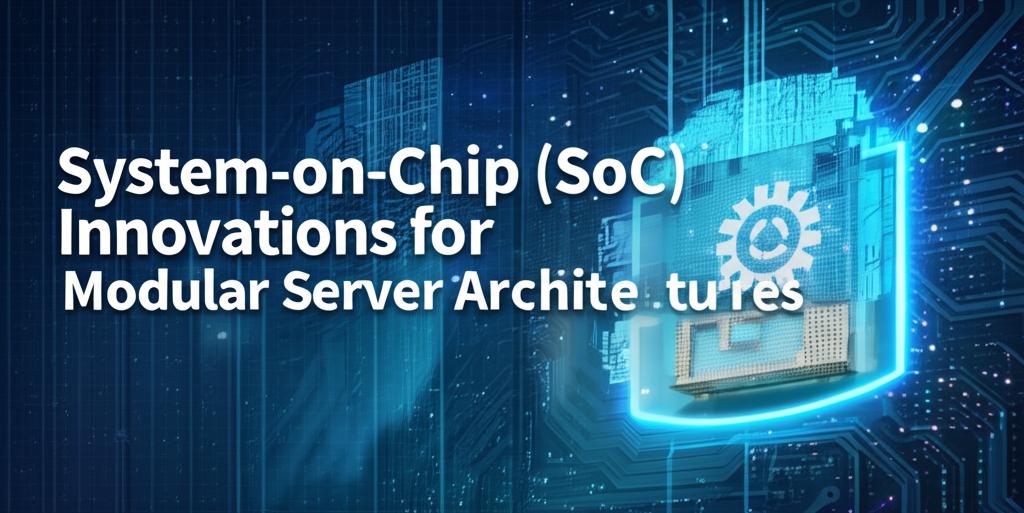The landscape of server architecture is undergoing a significant transformation, with System-on-Chip (SoC) innovations playing a pivotal role in enabling more modular and efficient designs. This shift is driven by the increasing demands of modern data centers for scalability, flexibility, and optimized performance across diverse workloads like AI, machine learning, and high-performance computing.
At the forefront of these innovations is the rise of chiplet technology. Instead of traditional monolithic SoCs where all components reside on a single die, chiplet-based designs utilize multiple smaller, specialized silicon "chiplets" interconnected within a single package. This modular approach offers several advantages. Manufacturers can optimize individual chiplets for specific functions (e.g., CPU cores, I/O, AI accelerators) using the most suitable process node for each, leading to improved performance and cost-efficiency. This "mix-and-match" capability allows for greater customization and faster adaptation to evolving technological demands. It also has the potential to improve manufacturing yields, as defects on a smaller chiplet are less costly than on a large monolithic die.
Heterogeneous integration, the ability to combine chiplets from different vendors or those manufactured using different process technologies, is a key enabler of this modularity. This allows server architects to select best-in-class components for each function, tailoring SoCs to specific workload requirements. Advanced packaging techniques, such as 2.5D and 3D stacking, are crucial for realizing the benefits of chiplet architectures by providing high-bandwidth, low-latency interconnects between these diverse chiplets.These SoC innovations are directly contributing to the development of disaggregated and composable server architectures. In a disaggregated model, server resources like compute, memory, and storage are separated into distinct modules that can be independently upgraded and scaled. SoCs designed for this paradigm facilitate the creation of these resource "bricks" or "blades" which can then be dynamically allocated and composed as needed to meet the demands of specific applications. This approach contrasts with traditional, monolithic server designs where resources are tightly coupled, often leading to underutilization or costly over-provisioning.
The benefits of SoC-driven modularity in server architectures are multifaceted. They include:
- Enhanced Scalability and Flexibility: Resources can be scaled independently, allowing data centers to adapt quickly to changing workload demands without replacing entire server systems.
- Improved Resource Utilization: By disaggregating resources, they can be pooled and allocated more efficiently, reducing stranded capacity.
- Optimized Performance: SoCs can be tailored with specialized accelerators (e.g., for AI/ML) to boost performance for specific tasks.
- Reduced Costs: Better yields from chiplet manufacturing, the ability to reuse IP, and more efficient resource utilization can contribute to lower overall costs.
- Faster Time-to-Market: The modularity of chiplet-based SoCs can accelerate the design and development cycle for new server platforms.
- Improved Sustainability: The ability to upgrade individual components rather than entire servers can extend hardware lifecycles and reduce e-waste.
Major industry players, including Intel, AMD, and cloud hyperscalers like Google and AWS, are actively driving and adopting these SoC innovations. Initiatives like the Open Compute Project (OCP) are fostering collaboration and standardization in modular hardware design, further accelerating this trend.
Looking ahead, the continued evolution of SoC technology, including advancements in interconnect standards, packaging, and design methodologies, will further unlock the potential of modular server architectures. This will enable data centers to become even more agile, efficient, and capable of handling the increasingly complex and demanding workloads of the future.

